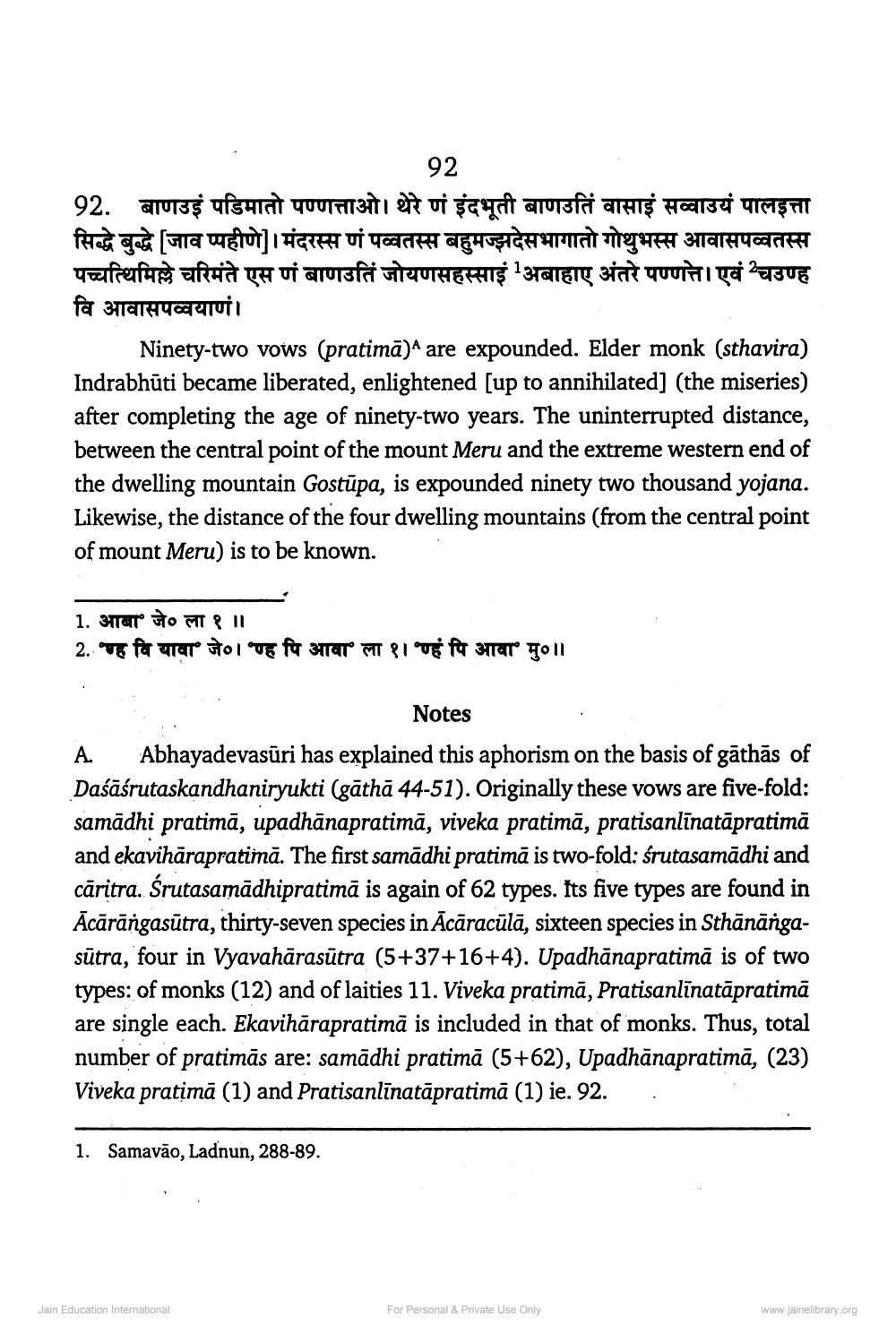________________
92
92. बाणउइं पडिमातो पण्णत्ताओ। थेरे णं इंदभूती बाणउतिं वासाइं सव्वाउयं पालइत्ता सिद्धे बुद्धे [जाव प्पहीणे]। मंदरस्स णं पव्वतस्स बहुमज्झदेसभागातो गोथुभस्स आवासपव्वतस्स पच्चथिमिल्ले चरिमंते एस णं बाणउतिं जोयणसहस्साइं अबाहाए अंतरे पण्णत्त। एवं चउण्ह वि आवासपव्वयाणं।
Ninety-two vows (pratimā) are expounded. Elder monk (sthavira) Indrabhūti became liberated, enlightened (up to annihilated] (the miseries) after completing the age of ninety-two years. The uninterrupted distance, between the central point of the mount Meru and the extreme western end of the dwelling mountain Gostūpa, is expounded ninety two thousand yojana. Likewise, the distance of the four dwelling mountains (from the central point of mount Meru) is to be known.
1. 316T TO IT II 2. og for ular stor og for
at se og for Bar Toll
Notes A Abhayadevasūri has explained this aphorism on the basis of gāthās of Daśāśrutaskandhaniryukti (gāthā 44-51). Originally these vows are five-fold: samādhi pratimā, upadhānapratimā, viveka pratimā, pratisanlīnatāpratimā and ekavihārapratimā. The first samādhi pratimā is two-fold: śrutasamādhi and cāritra. Srutasamādhipratimā is again of 62 types. Its five types are found in Ācārāngasūtra, thirty-seven species in Ācāracülā, sixteen species in Sthānāngasūtra, four in Vyavahārasütra (5+37+16+4). Upadhānapratimā is of two types: of monks (12) and of laities 11. Viveka pratimā, Pratisanlīnatāpratimā are single each. Ekavihārapratimā is included in that of monks. Thus, total number of pratimās are: samādhi pratimā (5+62), Upadhānapratimā, (23) Viveka pratimā (1) and Pratisanlīnatāpratimā (1) ie. 92. .
1. Samavão, Ladnun, 288-89.
Jain Education International
For Personal & Private Use Only
www.jainelibrary.org




